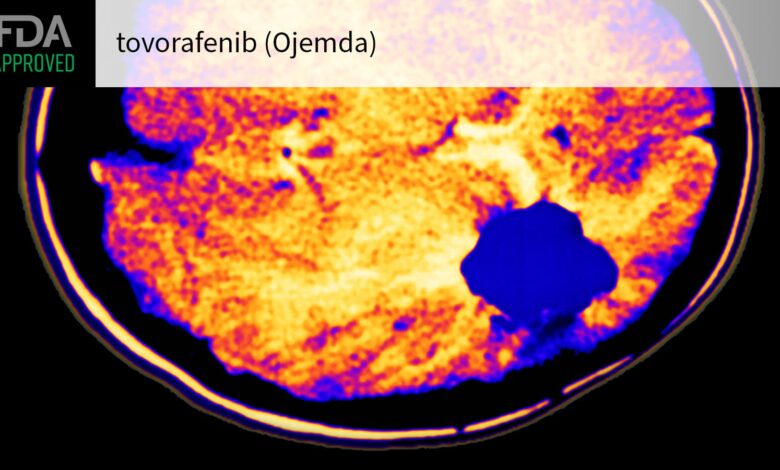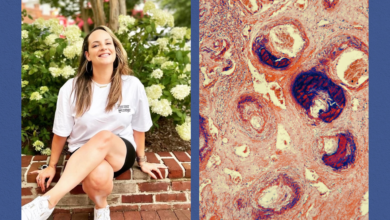New Targeted Drug Approved for Low-Grade Glioma in Kids

— First systemic therapy for pediatric patients with BRAF rearrangements
by
Mike Bassett, Staff Writer, MedPage Today
April 23, 2024
The FDA granted accelerated approval to tovorafenib (Ojemda) for children 6 months and up with relapsed or refractory low-grade glioma and BRAF-altered tumors, the agency announced on Tuesday.
It represents the first systemic therapy for pediatric low-grade gliomas harboring BRAF rearrangements, or fusions, according to the agency; the drug is also indicated for tumors with BRAF V600 mutations.
Approval was based on results from FIREFLY-1, a multicenter, open-label, single-arm trial involving pediatric patients with relapsed or refractory low-grade glioma and an activating BRAF alteration. Among 76 evaluable patients, treatment with the type II RAF inhibitor resulted in an overall response rate (ORR) of 51% (95% CI 40-63), with a median duration of response of 13.8 months.
The ORR was 52% among the 64 patients with BRAF fusions or rearrangements and 50% for the 12 patients with a BRAF V600 mutation. ORR was similar regardless of prior treatment: 49% among patients who had received a prior MAPK-targeted therapy and 55% among those who had not.
“[Pediatric low-grade glioma] pLGG is a chronic and relentless cancer that can devastate children and their families, often stealing their vision, balance, and speech,” said study investigator Sabine Mueller, MD, of the University of California San Francisco Benioff Children’s Hospitals, in a press release from the drugmaker, Day One Biopharmaceuticals.
“The goal of pLGG treatment is to stabilize or shrink the tumor without further disrupting the child’s and family’s life,” she added. “Historically, there has been no standard of care for children with pLGG who have relapsed. We are excited to welcome a new targeted treatment option with once-weekly oral dosing designed specifically for these kids and their families.”
The most common adverse reactions with the drug included rash, hair color changes, fatigue, viral infection, vomiting, headache, hemorrhage, pyrexia, dry skin, constipation, nausea, dermatitis acneiform, and upper respiratory tract infection.
The most common grade 3/4 laboratory abnormalities included decreased phosphate, decreased hemoglobin, increased creatinine phosphokinase, increased alanine aminotransferase, decreased albumin, decreased lymphocytes, decreased leukocytes, increased aspartate aminotransferase, decreased potassium, and decreased sodium.
Patients in the study were required to have documented evidence of radiographic progression and at least one measurable lesion. Patients with tumors harboring additional activating molecular alterations, such as IDH1/2 mutations or FGFR mutations, or with a known or suspected diagnosis of neurofibromatosis type 1 were excluded.
The recommended tovorafenib dose based on body surface area is 380 mg/m2 orally once weekly (maximum recommended dosage of 600 mg orally once weekly) with or without food until disease progression or intolerable toxicity.
Tovorafenib is available as an immediate release tablet or as an oral suspension.
-
![author['full_name']](https://clf1.medpagetoday.com/media/images/author/MikeBassett_188.jpg)
Mike Bassett is a staff writer focusing on oncology and hematology. He is based in Massachusetts.

